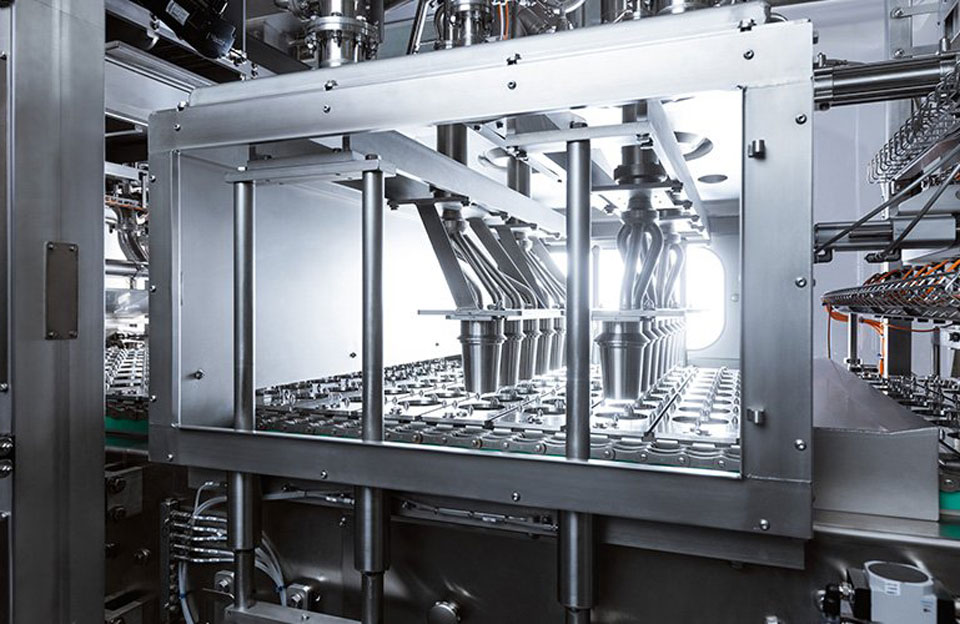Powder filling machine control system is an integral part of its overall operation. It provides the necessary automation and control functions to ensure accurate and efficient filling of powdered substances into containers. The powder filling machine control system manages various aspects of the machine, such as the filling process, speed control, monitoring, and safety features.
Typically, a powder-filling machine control system consists of hardware components, such as sensors, actuators, motor drives, programmable logic controllers (PLCs), and software programs designed to control and coordinate the machine’s functions.
The Composition and Function of the Control System
- Input: The powder filling machine control system receives input or feedback from the system being controlled. Inputs can be in the form of data, signals, or physical measurements that provide information about the current state or behavior of the system.
- Sensors: Sensors are devices that detect and measure physical quantities or variables such as temperature, pressure, speed, or position and are typically used to convert physical measurements into electrical signals that a control system can process.
- Controller: The controller receives the input from the sensor, processes the information, and generates an appropriate output signal, which is the core component of the control system. A controller analyzes input data, compares it to a desired or reference value (setpoint), and determines appropriate control actions to achieve desired system behavior.
- Actuator: An actuator is a device that receives a signal from a controller and produces a physical response or action, and is responsible for implementing a control operation in the controlled system. Examples of actuators include motors, valves, relays, or solenoids, depending on the nature of the system being controlled.
- Feedback: Feedback involves comparing a controlled system’s actual output or behavior with an expected or reference value and is an integral part of most control systems. The controller uses the feedback information to adjust and refine its control actions continuously, enabling the system to adapt to changes and disturbances.
- Control Algorithm: A control algorithm can be simple or complex, and does a controller use a mathematical or logical program to determine the appropriate control action based on input data and desired system behavior, ranging from basic proportional-integral-derivative (PID) control to model prediction More advanced technologies such as control or adaptive control.
- Control Loop: A control loop represents the flow of information and actions within a control system. It generally consists of four main steps: sensing or measuring the current state of the system, comparing it to the desired state, computing a control action based on the error or deviation, and applying the control action through an actuator.
Advantages of Powder Filling Machine Control System
The powder filling machine control system of the powder filling machine has several advantages that contribute to efficient and accurate operation. Here are some advantages of a well-designed powder-filling machine control system:
- Precision and Accuracy: The control system can adjust the filling speed, duration, and weight of each filling cycle, ensuring precise and accurate filling by closely monitoring and controlling the powder flow.
- Productivity and Efficiency: By automating the filling process, the control system can significantly increase productivity and efficiency, enabling high-speed continuous operation, reducing downtime between filling cycles, and increasing overall throughput.
- Minimize Errors: The powder filling machine control system minimizes human errors associated with manual filling operations. By automating the process, the control system ensures that the correct amount of powder is consistently dispensed into each container, reducing variation and eliminating the risk of overfilling or underfilling.
- Flexibility and Versatility: The well-designed control system provides the flexibility to program and set different filling curves, and the filling parameters can be easily adjusted to suit different product types, container sizes, and filling requirements.
- Data Monitoring and Reporting: Many control systems include monitoring and reporting capabilities that provide real-time data on filling performance. Operators can access fill weight, scrap rate, production counts, and alerts.
- Integration with Other Systems: The control system can be integrated with other equipment or systems in the production line, such as conveying systems, labeling machines, or quality control equipment, to achieve seamless coordination and synchronization between different processes and improve overall system efficiency.
- Safety Features: Control systems often incorporate safety features, including emergency stop buttons, interlocks, and sirens, to ensure operator protection and prevent accidents, reducing the risk of injury or damage.
- Remote Monitoring: The remote monitoring capabilities of advanced control systems can enable operators or supervisors to monitor and adjust machines from a central control room or even an off-site location, improving convenience, accessibility, and responsiveness.
Conclusion
Control systems for powder filling machines increase precision, productivity, flexibility, and safety while minimizing errors and improving process control, helping to improve product quality, reduce waste, and increase the reliability of powder filling operations.


